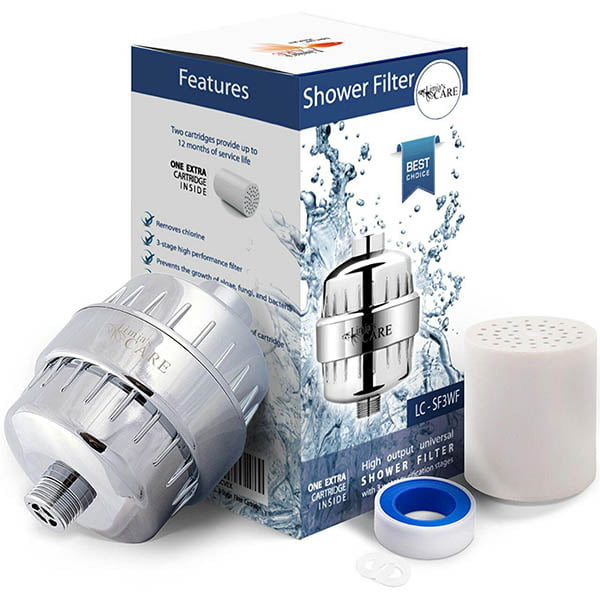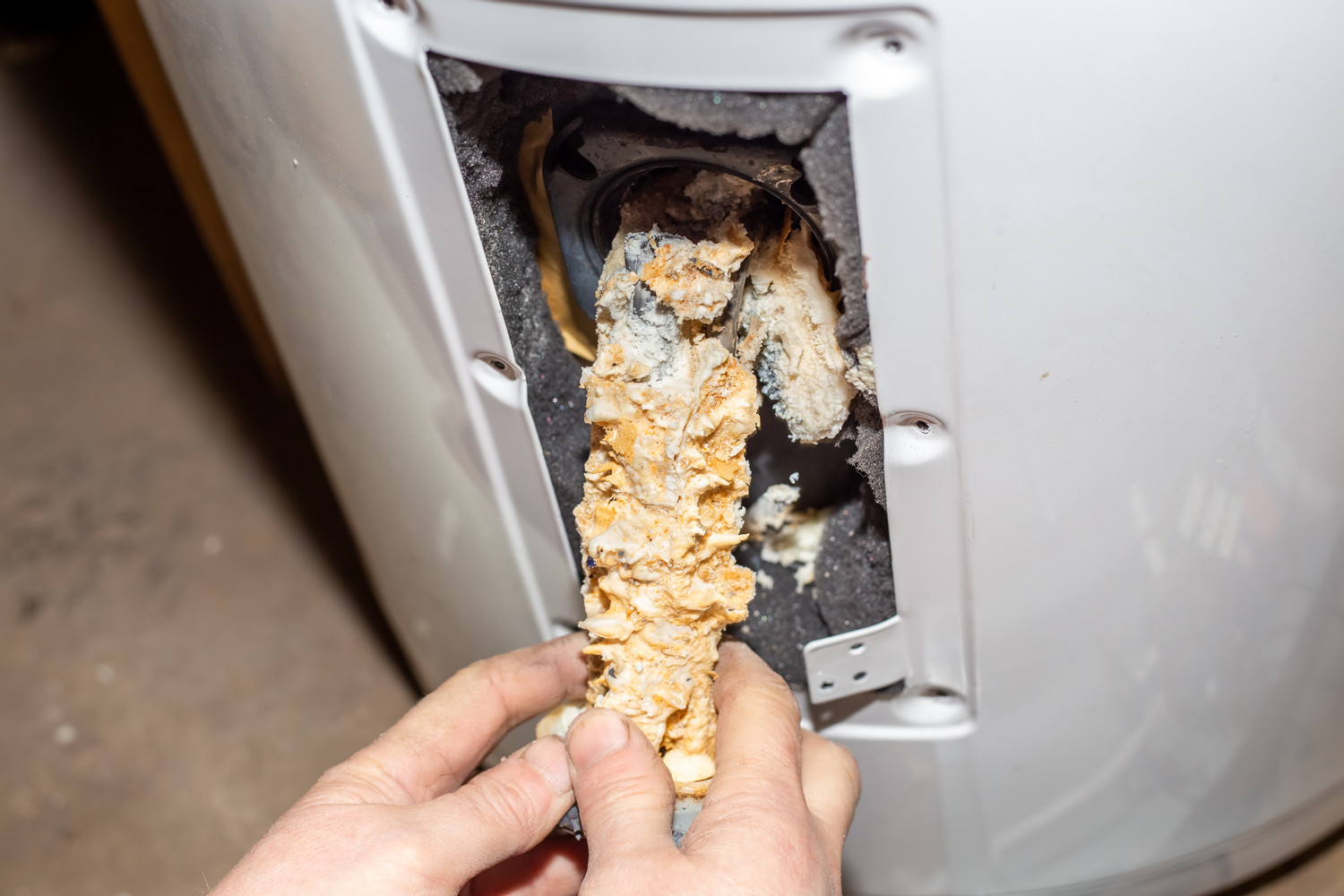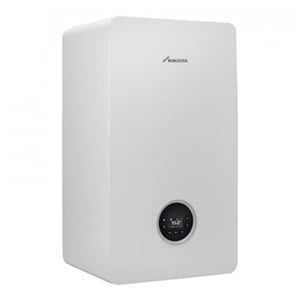Due to the presence of salts in municipal water, which are often natural and even essential, pipes and heat exchangers such as samovar and kettle are being deposited, to guide you in this regard and for clean sediment from water heaters. We have prepared.
Causes and Reasons for Clean Sediment from Water Heaters
 Sedimentation of water heater pipes causes the diameter of the pipes to decrease
Sedimentation of water heater pipes causes the diameter of the pipes to decrease
Sediments reduce the heat transfer from the flame to the water by thickening the wall of the water heater converter. This decrease in thermal conductivity, in turn, causes heat loss and damage to the outer wall as well as to the noise in the pipes.
Another contributing factor to the heat exchanger tube deposition is the point heating of the heat exchanger tube at the top of the candle, which in some cases does not disappear even with the deposition material. As a result, we have to cut the pipe and weld it again.
One of the reasons for the removal of candles in new models of water heaters is to fix this problem. Adjusting the flame and extinguishing it when not in use for a long time can greatly improve the water heater’s performance.
Failure to adjust the spark plugs and the incomplete desalination of the wall water heater will require de-sedimentation every three months.
Ingredients for clean sediment from water heaters
Chloric acid or 20% salt inks are used to remove sediment inside the heat exchanger. Always keep these substances in sealed containers so that their toxic vapor does not cause respiratory problems and be careful not to spill onto other surfaces.
Highlights clean sediment from water heaters
- Before de-sedimenting, first, look around the converter
- Then visit the converter ceiling flashlight below
- The worn-out spots are covered with gypsum and will drip after deposition.
- If you see these symptoms, you should cover the worn spots with silver
- But if the burnout is more than a few points, you need to replace the converter.
Deposition of water heater is done in two ways:
Gravity method and pump method.
1. The pump does not open the water heater during the desalination process with the pump
2. By removing the frame on it and opening the bottom nut, the pump is connected to the water heater and then de-sedimentation is carried out.
However, in deep desalination, your water heater will open to discharge the converter. It is then poured into the converter with a funnel of salt or acid. For this reason, it is best to carry out the gravity procedure only when needed and by experts.
Required pumping equipment for clean sediment from water heaters
In this method, we place the acid pump in the acid container.
Connect the outlet of the pump to one side of the heat exchanger and connect the other side of the heat exchanger to the container using a rubber hose. After a few minutes, the whole mass pump is pumped into the heat exchanger.
After finishing work, pour clean water into the container and wash the converter with water.
- Acid wash pump
- Flexible hose 2
- Suitable plastic container for pouring acid
- 1 gallon acid
- 1 gallon of water
- Goggles
- Mouth mask
Before starting, make sure the water inlet valve is closed.
In this method, after draining the water in the heat exchanger tube, we place the acid pump in the acid container and connect the pump outlet to one side of the heat exchanger and connect the other side of the heat exchanger to the drain using a rubber hose.
- We turn on the pump.
- We continue deposition until the acid exits without foam.
- After the work is done, wash the converter with water
- We close the connections.

Equipment required by gravity method for clean sediment from water heaters
- 20 mm polypropylene pipe one meter
- Bushen P.P
- Rubber hose 2 pcs
- Medium plastic hopper
- Suitable plastic container for collecting acid output from the converter
- Rubber gloves
- White protective glasses
- Large plastic pan for pouring water and converting it
- Disposable Mask
- Hydrochloric acid
- Salt ink (20% 2 liters)
This procedure is recommended only to specialists
Highlights when charging a home water heater:
At the first moment, the acid enters the exchanger, due to a severe chemical reaction from the top of the funnel, it breaks down to a large extent, causing damage if ignored.
Be careful not to overload as soon as the acid is poured into the hopper.
After pouring all the acid into the transducer, repeat this operation several times to completely remove all the sediment inside the transducer and have no acid pads.
In the first step, when the acid enters the converter, the converter output is flat. This lowers the amount of time the acid goes away. Once the mass has been fully converted, no foam with the acid will be removed.
When finished, remove the acid container and pour pure water into the hopper until the converter is thoroughly washed.
Removing Sediment from Your Hot Water Heater in London
Is your hot water heater showing symptoms of sediment buildup? Don’t worry, we’re here to help! Our experienced team in London specializes in diagnosing and resolving sediment-related issues in hot water heaters. We understand that sediment buildup can cause various problems, and we have the expertise to address them effectively.
Symptoms of Hot Water Heater Sediment
- Reduced Hot Water Flow: Sediment accumulation can restrict the flow of hot water in your plumbing system. If you notice a decrease in water pressure or a slower flow of hot water, it may be due to sediment buildup in your water heater.
- Noisy Operation: Sediment can create a rumbling or popping sound in your water heater as it heats the water. This noise occurs when the sediment gets trapped and heated, leading to inefficient operation and potential damage to the tank.
- Decreased Efficiency: Sediment buildup can reduce the efficiency of your hot water heater, making it work harder to heat the water. This inefficiency can result in higher energy bills and shorter lifespan of the heater.
How to Remove Sediment from Your Water Heater
- Drain the Tank: Begin by turning off the power supply to your hot water heater. Connect a garden hose to the drain valve at the base of the tank and direct the other end to a suitable drain or outside area. Open the drain valve to allow the water to flow out of the tank, flushing out the sediment.
- Flush the Tank: Once the tank is drained, close the drain valve and turn on the cold water supply to the tank. This will help flush out any remaining sediment. Allow the water to run for a few minutes until it runs clear, indicating that the tank is free from sediment.
- Repeat if Necessary: If you notice a significant amount of sediment, you may need to repeat the draining and flushing process multiple times until the water runs clear. This ensures that the tank is thoroughly cleaned.
Preventative Measures and Maintenance
To minimize sediment buildup and extend the lifespan of your hot water heater, consider the following:
- Regular Maintenance: Schedule regular maintenance for your water heater, including flushing the tank, as recommended by the manufacturer or a professional plumber.
- Water Softening: If your water supply has high mineral content, installing a water softener can help reduce sediment buildup and extend the life of your water heater.
Contact Us for Sediment Removal and Hot Water Heater Maintenance
If you need assistance with sediment removal or general maintenance for your hot water heater in London, our skilled team is ready to help. We provide professional services to ensure your hot water system operates efficiently and reliably.
Call us at 02036748514 or visit our website at https://emergencyplumb.co.uk/ to schedule an appointment or learn more about our services. Trust our experienced team to address sediment-related issues and keep your hot water flowing smoothly. Experience the difference of working with a trusted plumbing company in London!
“Water heaters ” Service in London city
Our popular plumber London provides services to dear citizens! without limitation time and space! round the clock and in the north, south, east, west, and downtown London will give. Contacting us will be possible through this site.



